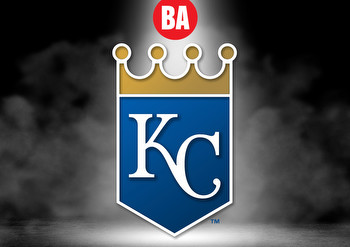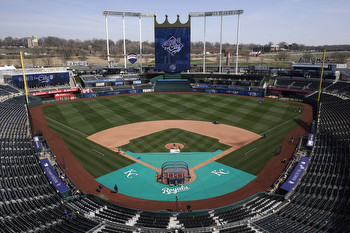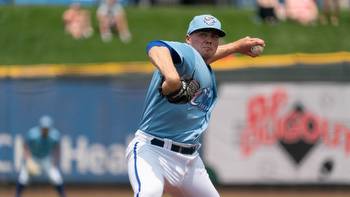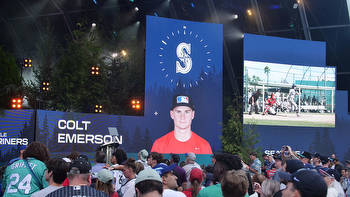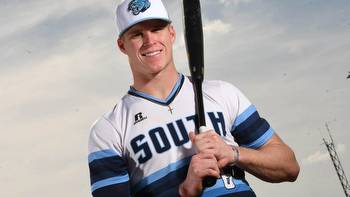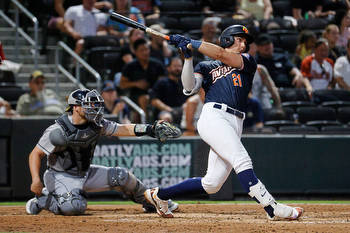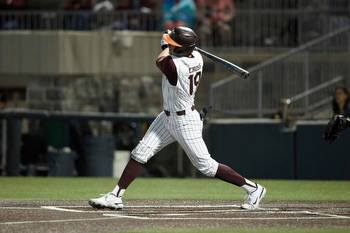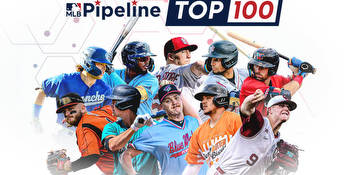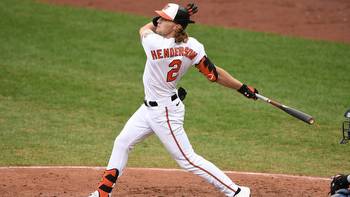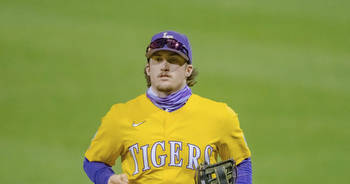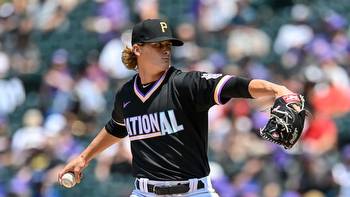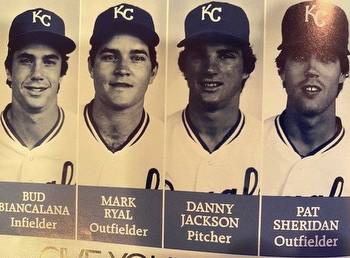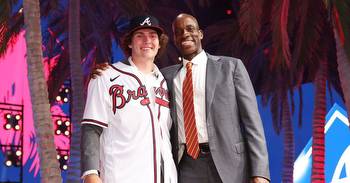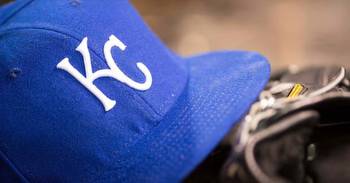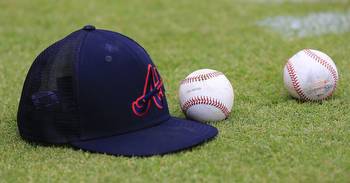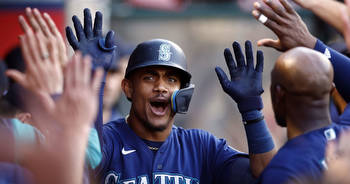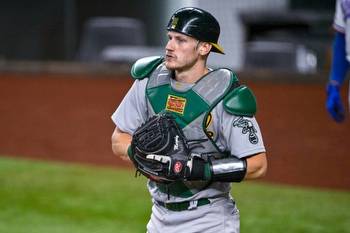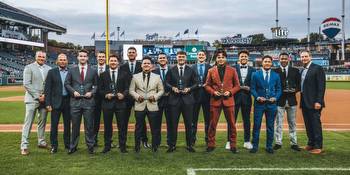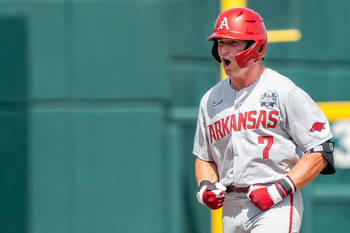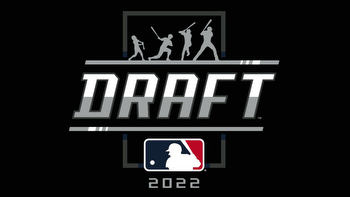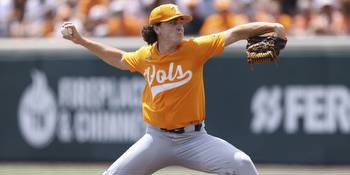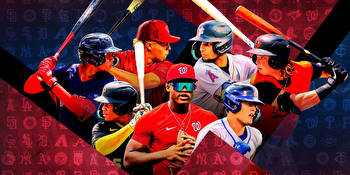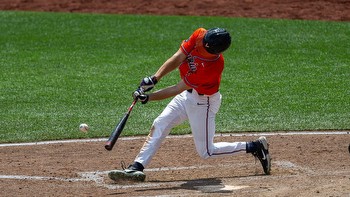A new narrative on the Royals 2023 Draft
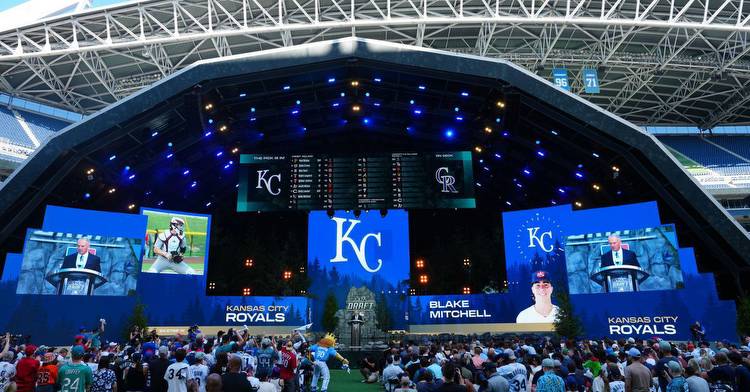
The MLB Draft is officially in the books and to put it bluntly, it’s hard to find a positive take out there about the Kansas City Royals’ latest draft class. They started things off with prep Catcher Blake Mitchell at number eight overall. Then came a high-school pitcher named Blake Wolters in the second round. Another high-school arm in Hiro Wyatt came in Round Three. They did add some college talent, including outfielder Carson Roccaforte with Pick 66, LHP Hunter Owen with Pick 106, and outfielder Spencer Nivens with Pick 142. As a whole, however, the consensus seems to be very negative reactions all around regarding the draft strategy that the Royals implemented.
Bleacher Report graded the Royals draft a ‘C-’ and ESPN called Blake Mitchell their “least-favorite pick in the first round.” The thoughts immediately after the Mitchell selection were that it would be an under-slot signing that would allow them to spend up later in the draft. That could still be the case, but the token “late-round gem” that we’ve seen in recent years — players like Vinnie Pasquantino, David Sandlin, and Austin Charles — never seemed to come. It’s possible that as signings come down the wire we still see some players sign for well above late-round slot values. Outfielder Jared Dickey was the 115th-ranked draft prospect according to MLB Pipeline. The Royals drafted him in the 11th round and he’s already expected to sign with the team.
There’s one question that hasn’t been asked enough since the draft concluded and it deserves answering: What if it all pays off? What if these picks turn out to be exactly what J.J. Picollo and the front office were hoping for? There has been more than enough talk of “failed first-round prep catchers” and “early-round high school pitchers that never reach the major leagues.” Is it possible that those pessimistic narratives are looking at the approach all wrong?
The Royals needed to add ceiling to the farm system and they have
Entering the season, the Kansas City farm system ranked 29th in baseball according to MLB Pipeline. In the years leading up to 2023, they graduated a number of high-ceiling, top prospects such as Bobby Witt Jr., Nick Pratto, MJ Melendez, Daniel Lynch, and Brady Singer. The Royals had three prospects in the MLB top 30 just two seasons ago. The real issue with the farm system following those graduations has been a lack of ceiling.
There’s a good amount of depth in players like Nick Loftin, Tyler Gentry, Carter Jensen, and others. Cayden Wallace may prove more valuable than expected but he’s currently not listed on any top 100 prospect lists. No one in the system is. Gavin Cross fell off the top 100 earlier this season after struggling heavily with strikeouts this season. Frank Mozzicato has been one of the best 50 pitchers in the entire minor leagues this season, but he’s yet to appear on any top prospect lists himself. With a recent promotion to High-A, maybe that will change soon. No one in the farm system seems to offer a superstar ceiling.
The Royals did what everyone wanted them to do in last year’s draft. They played it safe. The first two selections were college bats, the next three were college arms, and in total, they selected 17 college players with their first 17 picks. Just a year removed from a pretty “safe floor” draft, with a farm system that ranks near the bottom of the league due to a lack of ceiling, what if the draft philosophy this year was to take some risk? What if they knew the risk and wanted to take the players anyway? After all, the early favorite to be the best pick in last year’s draft class could very well be 20th-round prep bat, Austin Charles.
It may not pay off and it could cost some front office members their jobs in the coming years. However, who’s to say that playing it safe wouldn’t cost their jobs as well? Playing it safe got the Royals where they are today. They’ve been afraid of trading top players at peak value for prospects and they’ve crashed and burned with some of their “safest” early-round picks dating back to 2017: Gavin Cross (TBD), Asa Lacy, Brady McConnell, and the 2018 pitchers. The Royals' best early-round picks over the last six seasons have been, arguably, their most risky: Frank Mozzicato, Nick Pratto, and MJ Melendez.
The High School Catcher debate and what history tells us
Blake Mitchell highlights a lot of fear and cynicism around the Royals draft class. He’s a high-school catcher and was named the Gatorade Texas High School Player of the Year in both 2022 and 2023. He was committed to LSU and ranked as the number one catcher in the nation according to Perfect Game, and the eighth-best prospect overall in his recruiting class. Post-draft, Mitchell was interviewed by the Corpus Christi Caller-Times and stated that he will be signing with the Royals and won’t attend LSU. He mentioned that in recent talks with LSU head coach, Jay Johnson, they discussed what his future plans may look like. Here’s the full quote from the Caller-Times:
“I haven’t (talked to coach Jay Johnson) but he was on MLB Network and he said some good things to say about me,” Mitchell said. “...I think he’ll understand, he told me on my official (visit) ‘If you’re not a top 10 pick you better be here.’ I went inside that top 10 so I think he’ll understand.”
I reached out to Jay Johnson myself on Monday. I asked him what things he sees in Mitchell that make him such a stellar prospect. In his response, he told me that Mitchell is a “special talent.” “Joe Mauer qualities on the catching side [and] if it doesn’t work, he could become a Major League Pitcher. Special talent worthy of that pick.” That’s pretty high praise from the man that just recruited the first two teammates to go number one and two overall.
The concern around the pick doesn’t seem to be entirely around Mitchell himself but around the failures of prep catchers. History tells us that they fail much more often than they succeed, and Keith Law told me as much at the draft as well. Does that still hold as much water as it used to? Since 2014, there have only been four high-school catchers selected in the first round. They simply haven’t been drafted high enough in recent years to change the narrative. Catchers in today’s game seem to be more athletic than ever, as evidenced by MJ Melendez who made the transition to the outfield just a year after leading the Minor Leagues in Home Runs as a catcher.
The four high school catchers taken in the first round since 2014 include Tyler Stephenson, Anthony Seigler, Tyler Soderstrom, and Harry Ford. Stephenson made his debut in 2020 and has been worth 1.5 or more fWAR in two of his four seasons. His career slash line is currently .281/.358/.425. Zeigler was a bit of a bust, and never surpassed AA to this point. Harry Ford appeared in the Futures Game for Seattle last weekend and is currently the number 26 prospect in all of baseball. Soderstrom, who Mitchell compares to most as a player, is the number 34 prospect in all of baseball.
The jury is still out on how Ford and Soderstrom will do at the next level, which is really the root question here. If we’re interested in major league success, how have the top 30 catchers by fWAR looked since 2000? It may not fit the narrative you’d expect.
Among the top 30 catchers since 2000, 23% have been high school catchers drafted in the first five rounds. That’s tied with international signings for the highest percentage of any category. Early-round college draftees made up 20%. The position is changing, there’s more recent data that early-round high school catchers may not be so bad after all, and there’s historical data going back to 2000 that shows in order to acquire the best of the best, taking an early-round prep catcher isn’t so bad of an idea. Looking back to the Royals’ draft strategy of finding a ceiling, this pick does exactly that. The Royals aren’t looking for a future average major league catcher — they’re swinging for the fences and hoping for a foundational value over the next ten years.
The High School Pitcher debate and what history tells us
As if rattling hopes and dreams with a high school catcher wasn’t enough, Kansas City followed that up with a right-handed pitcher out of high school, Blake Wolters, with their second pick. Their third-round pick was also a right-handed pitcher out of high school, Hiro Wyatt. Much like Mitchell, the overall consensus was one of riskiness. These picks could very well pay off, but the risk is extreme. The percentage of high school arms that reach the major leagues is much lower than college arms, that’s a given. Again though, the Royals look to be swinging for top value and ceiling versus just more depth.
The entire 2018 draft class was full of college arms that just haven’t panned out. Daniel Lynch looks to be turning a corner and the Brady Singer roller coaster certainly has its high points. However, it didn’t change the franchise for the better as it was supposed to do. There has been some good pitching development in the minor leagues this year and —although Kansas City probably ranks middle of the pack now in that regard at best — that’s a great sign for a team that was starving for pitching development.
Two of their very best arms in the system were high school draftees, Frank Mozzicato and Ben Kudrna. It’s time to bury the Ashe Russell hatchet and move on. I want to see the pitching translate to the major leagues, but that isn’t happening for at least two years and this farm system can’t wait two years to add high-ceiling potential. Much like catchers, let's take a look at how the top pitchers in the league have looked since 2000:
Much like with catchers, I’m not so sure the narrative around the Royals draft picks is looking at the right things. Sure, there’s more than ample risk. Far fewer prep arms reach the major leagues than those from the college ranks. However, when looking at the best of the best, the results aren’t as different. Again — and I can’t say it enough — the Royals needed more ceiling in the farm system and if we look at the very best pitchers in baseball since 2000, 27% of them have been early-round prep pitchers. That’s just behind early-round college pitchers who make up 34% of the list. No doubt, young arms fail more often than you’d like to see but, when they hit they hit.
I’ll say it one last time. If this strategy fails, sadly we probably see many lose their jobs in the front office. It may be the last chance for Lonnie Goldberg, former Scouting Director who still has a heavy hand in draft operations. It may even be the last chance for J.J. Picollo, who still faces heavy criticism from fans for being “too much like” Dayton Moore. It would also likely mark yet another failed Royals rebuild attempt, which no one in Kansas City should be rooting for.
If the Royals have their ceiling this year in what was a very deep prep class, then they can focus next year on what is a very good and deep college class. Not to mention, Kansas City will likely have an earlier pick next season unless the draft lottery screws them again. They’ll likely have a top-five pick as well as a second pick in the Competitive Balance Round A. Two top 40 picks next year makes this strategy even easier to stomach and just adds another reason to think it’s really not as bad as some will have you believe. The Royals need Blake Mitchell and Blake Wolters to pan out, but the fans need it just as much.

